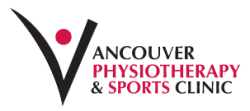Many people will suffer from pain in the back at some point in their lives. Pain in the back is very typical amongst athletes and could be the result of spine injuries such as fractures or sprains. Accidents, falls and direct blows to the back can likewise cause back. Pain in the back includes pain from the neck to the (coccyx) tail-bone.
Cervicalgia is a nuisance that does not radiate down to the arm. Symptoms consist of acute pain in the neck, aching and discomfort when turning the head sideways. You might be suggested a cervical collar to assist the muscles to rest. Whiplash is an usual cause of neck pain. Application of ice to control pain, training in stretching and strengthening exercises form part of the physiotherapy program.
A direct blow to the back may lead to a contusion – an injury in which the skin is not broken. Signs consist of pain, swelling or bruising over the area, trouble in bending forwards, sideways or aligning. Muscle splits are graded according to the degree of the tear. With a grade 1 tear, you will feel tightness in the back, but may have the ability to stroll appropriately and not have much swelling. Problems with walking and unexpected twinges during activity may be symptoms of a grade 2 tear. There will also be some swelling and discomfort. With a grade 3 tear, discomfort is more extreme and swelling appears promptly. Walking is tough. For all of these problems, you must rest from workouts or exercise and see us.
A physiotherapy assessment for back pain consists of a subjective history of the sort of injury, symptoms and prior level of function. We may also ask concerns about your sleeping posture and behaviour of the signs throughout day-to-day living and other activities. An unbiased evaluation follows, that includes an assessment of your posture, gait, active variety of activity of the spinal column, strength, reflexes and muscle versatility.
A treatment plan will include:
– Using techniques to lower discomfort, such as ice packs, heat, transcutaneous electrical nerve excitement (TENS) or ultrasound.
– Positioning for relief of discomfort and muscle spasm.
– Mobilization to improve movement of specific joints.
– Training in posture, body mechanics, boosting and conditioning.
It is necessary that each injury be evaluated by a physiotherapist as back pain is not a matter to be ignored. Our goal at Vancouver Physio and Sports Clinic is to supply symptom relief, bring back joint and soft tissue movement and help you make return to your regular activities.
